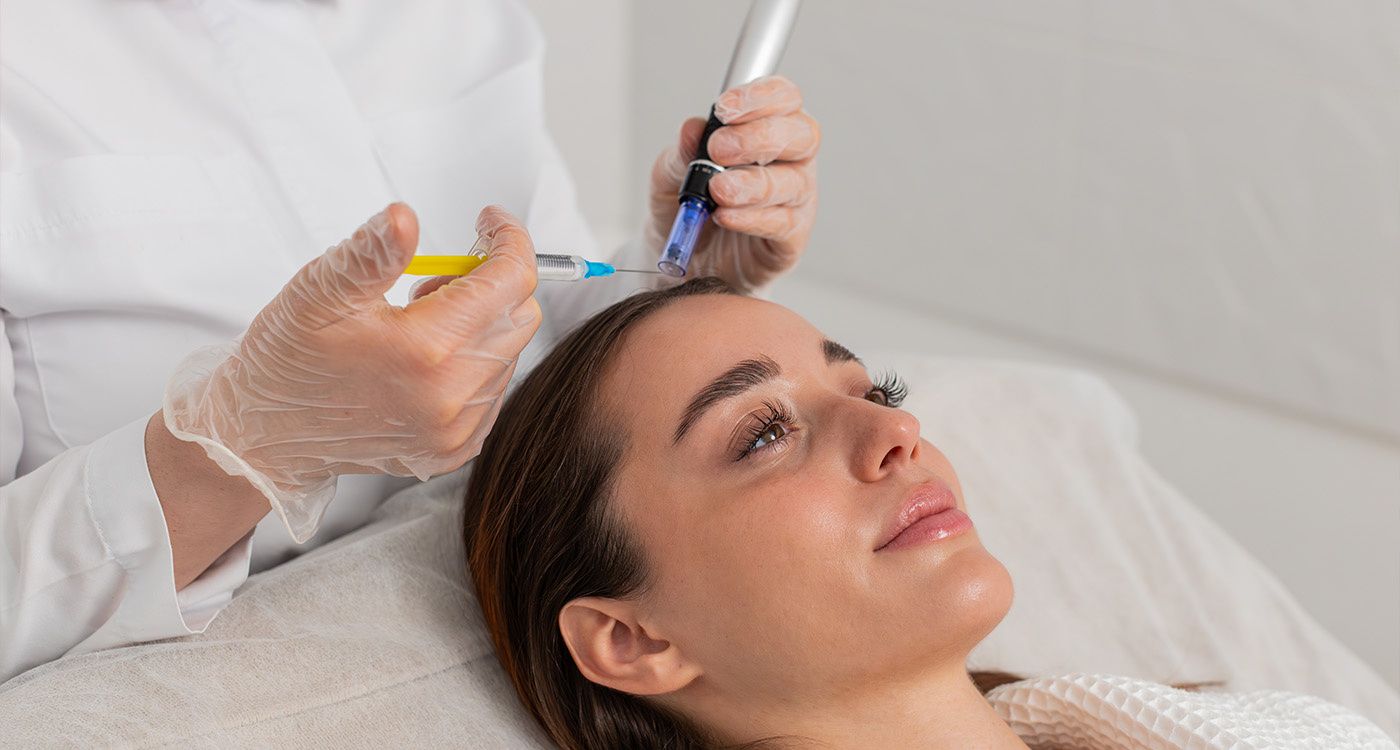- Home
- Highlights
- Exosomes: The Next Cellular Hype

©Shutterstock
Exosomes, vesicles derived from stem cells, are captivating the world of aesthetics. Applied after laser treatments or microneedling, they promise regenerated, radiant skin. Yet their effectiveness, safety, and proper use remain highly debated, particularly in Lebanon, where the practice is booming. This concern is also voiced by Professor Roland Tomb, Honorary Dean of the Faculty of Medicine at Saint-Joseph University in Beirut and dermatologist-allergist at Hôtel-Dieu de France.
From aesthetic clinics to Instagram feeds, exosomes are everywhere. Celebrated as the next breakthrough in cellular rejuvenation, these microscopic vesicles derived from stem cells are said to boost skin regeneration, refine texture, and restore firmness, all without surgery.
But what exactly are exosomes? They are nanoparticles naturally secreted by stem cells. In the body, their role is to transmit proteins, RNA, growth factors, and biological signals that “awaken” neighboring cells. In aesthetic medicine, exosomes are derived from human cell cultures (umbilical cord or adipose tissue) or plant sources. Laboratories describe them as powerful “activators” of skin repair, helping speed up healing after laser or microneedling treatments and enhancing collagen production.
However, caution is essential. In practice, exosomes should only be applied topically or in combination with microneedling, a technique that uses very fine needles to help them penetrate the dermis. Direct injection of exosomes – whether intradermal, intravenous, or subcutaneous – is neither authorized nor recommended by health authorities, including the Mayo Clinic, the Plastic Surgery Association, and the FDA.
The promise is enticing. In Lebanon, many clinics apply exosomes immediately after “traumatic” treatments such as fractional laser, radiofrequency, or microneedling, aiming to accelerate healing, reduce redness and irritation, and provide a visible “radiance boost” within days. Some protocols also target hair loss: topical application of exosomes to the scalp, often alongside PRP, is said to awaken hair follicles, increase density, and stimulate regrowth.
Yet uncertainty persists. Few independent studies confirm the actual effectiveness of exosomes in aesthetics. Most publications are industry-sponsored and rely on small sample sizes or even animal models. Their mechanisms of action remain largely theoretical, and long-term effects are unknown. In theory, human exosomes should not trigger an immune response, but in practice, no risk is ever completely eliminated, particularly without strict control over the product’s source, quality, or concentration.
Another key point: no major health authority, including the US FDA, has approved exosomes for aesthetic or medical use. The FDA has even issued an official warning reminding that exosome injections are prohibited, and their use should be limited to topical applications as part of supportive care and only under medical supervision. Any direct injection falls outside approved marketing authorization and carries unmeasured risks.
This excitement, largely driven by trends and the pursuit of new treatments, should be approached with caution. Exosomes may offer potential as a supplementary therapy, but their promised “revolution” is not yet proven.
Exosomes illustrate the fine line between scientific innovation and marketing hype. Only time will tell whether they become a standard in aesthetic medicine or remain a fleeting trend. Care, patience, and well-informed decisions are essential before considering any treatment.
FAQ – Exosomes: Need-to-Know
Can Exosomes Be Injected?
No. Exosomes are not authorized for direct injection—whether intradermal, subcutaneous, or intravenous. Their approved use in aesthetics is limited to topical application or in combination with microneedling, which helps them penetrate the skin safely.
Are They FDA-Approved?
No. No exosome formulation has received approval from the FDA or any European health authority. The FDA has even issued an official warning against their injectable or systemic use.
Are Exosomes Used Beyond Aesthetics?
Yes. They are being tested in medical dermatology and hair regeneration research, particularly for hair loss, often in combination with PRP (platelet-rich plasma). Their effectiveness in these contexts has yet to be confirmed.
What Are the Risks?
When used topically or with microneedling, risks are generally considered low, but remain poorly understood. Potential risks include allergies, contamination, or immune reactions if the product is impure. No serious complications have been reported to date, though long-term data are limited.
How Much Does It Cost?
In Lebanon, exosome treatments typically range from $150 to $300, depending on the technique, the practitioner, and any additional procedure.
Do Exosomes Replace Fillers or Botox?
No. Their role is to support recovery after an invasive treatment, improve skin texture, or stimulate hair regrowth. They do not add volume or freeze facial expressions.
How Exosomes Work
An exosome is a microscopic vesicle released by a stem cell. Its natural role is to carry proteins, messenger RNA, and growth factors to locally “reprogram” tissue repair.
In aesthetics, exosomes are applied to the skin (as a mask or serum) immediately after a treatment that opens the pores, such as laser therapy or microneedling. They should not be injected: only the micro-perforation created by very fine needles during microneedling allows effective and safe penetration, without crossing regulatory boundaries for injections.


Comments